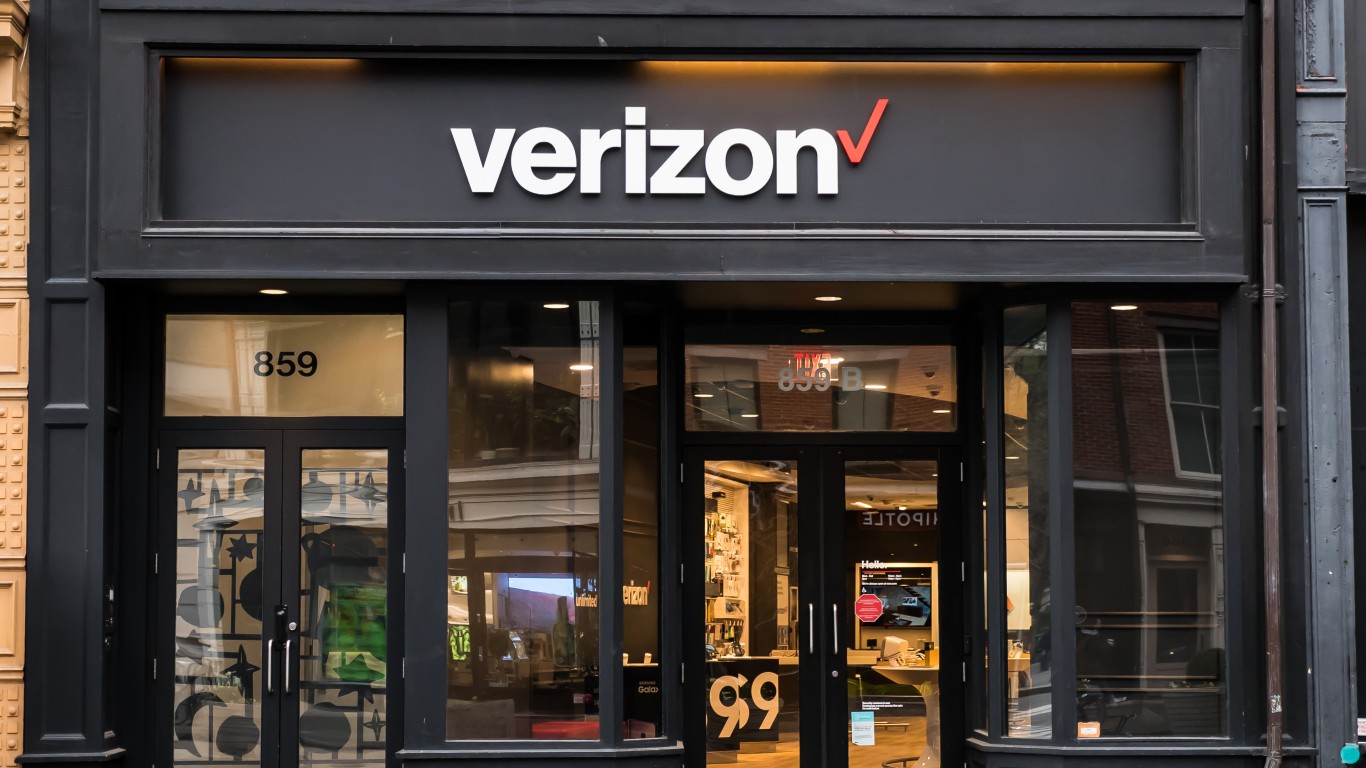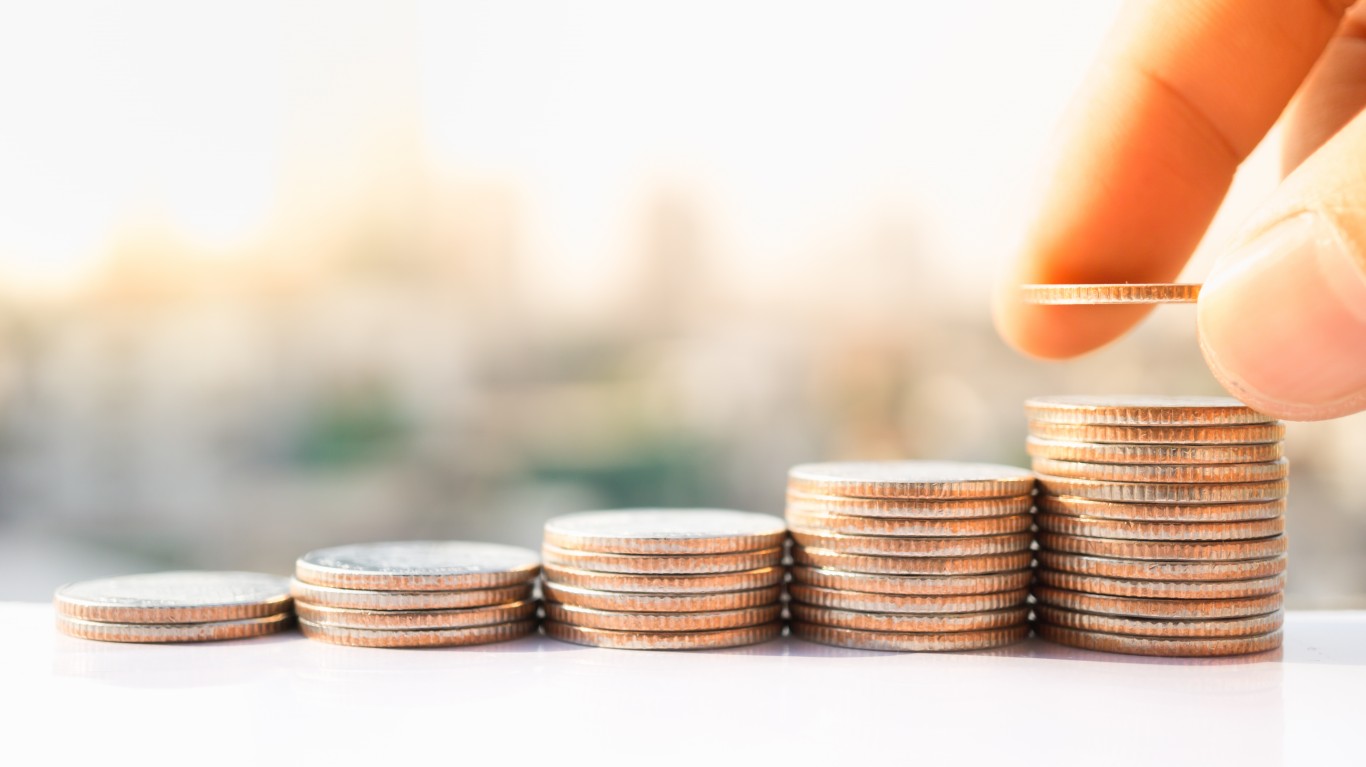
A key component of income investing is a portfolio that includes safe dividends, those that are unlikely to shrink or disappear. Recognizing when a dividend is stable and safe can be a challenge. Yet, certain metrics can offer clear signs for the investor looking to establish or shore up such a portfolio. What do these metrics tell us about the quarterly dividend at Verizon Communications Inc. (NYSE: VZ)?
Verizon’s most recent payout was $0.655 a share, and the yield is now about 6.8%. Assuming it follows the well-established pattern, the next ex-dividend date likely will be in early February. The current yield is a bit better than that of telecom services competitor AT&T Inc. (NYSE: T) and well above that of T-Mobile US Inc. (NASDAQ: TMUS). It is also above the 5% or so industry average.
Dividend Aristocrat?

Other Valuation Metrics

The dividend payout ratio indicates how much of a company’s earnings are paid out as a dividend. It is a sign of how safe a company’s dividend is and how much room it has for future growth. The higher the ratio, the greater the risk. Income investors often look for a dividend payout ratio of less than 60%. Alas, Verizon’s current dividend payout ratio is over 63%, the highest it has been since the spring of 2020.
A look at free cash flow reveals whether the company has the funds required for its payout, as well as for share repurchases or even paying down debt or making acquisitions. As of last September, Verizon’s free cash flow was about $14.6 billion for the trailing 12 months, which is higher than the $14.0 billion for 2022 but less than the $19.3 billion for 2021. Income investors prefer growing free cash flows, but at Verizon they have risen and fallen over the past decade.
Return on invested capital is a measure of how well a company allocates its capital to profitable projects or investments. Again, the thing to look for is stability, specifically a double-digit ROIC over many years. Verizon’s ROIC has been fairly stable, at around 10% for the past couple of years. Not so much in the long run, though, as it was almost 15% in 2015 and around 20% in 2018.
Operating margin is a measure of the percentage of revenue a company keeps as operating profit. Here too the preference is for a stable double-digit percentage increase. Verizon’s operating margin has been mostly above 20% since 2016.
A look at sales growth offers a clue to the volatility or cyclical nature of the business. Steady, moderate growth, say 3% to 7%, is ideal. While the swings in Verizon’s annual revenue are not wild, the growth has faltered now and again since 2010. The overall trend in that time has been upward, however.
A company’s net debt-to-capital ratio also can signal whether a dividend may be at risk. Because too much debt can put dividends at risk in hard times, a lower ratio is considered better. A ratio above 0.6 usually means that a business has significantly more debt than equity. Verizon’s ratio has fallen from nearly 0.9 in 2014 and now is about 0.6.
Probably the most popular valuation metric is the price-to-earnings (PE) ratio. This indicates whether a stock is expensive or cheap at its current market price and how it compares to the broader market or competitors. Verizon’s low PE ratio of about 7.7 indicates it may be undervalued. A PE ratio of 15 has been a historical benchmark, but the broader market now has a PE of 24 or so. T-Mobile’s PE is higher than the market average, while the ratio at AT&T is lower than that of Verizon. (Why the six highest-yielding Warren Buffett stocks are perfect 2024 investments.)
And finally, the number of shares outstanding is worth a look. When companies buy back their shares, that total shrinks. But secondary offerings of stock increase that number. Investors tend to prefer a declining total, as that increases their stake over time. Alas, about 4.2 billion Verizon shares are outstanding, the highest total since 2010. The total has grown annually since 2016. Note that the company halted its share repurchase plan last year.
Summary

| Dividend Aristocrat | 🗙 |
| Dividend payout ratio | 🗙 |
| Free cash flow | 🗙 |
| Return on invested capital | 🗙 |
| Operating margin | ✔ |
| Sales growth | ✔ |
| Net debt to capital ratio | ✔ |
| PE ratio | ✔ |
| Shares outstanding | 🗙 |
The company has had a good run of increasing its payout annually, even if it has a ways to go to become a Dividend Aristocrat. The dividend may be safe for now, but the company does bear watching. Few analysts currently recommend buying the stock, and their consensus price target suggests about 6% upside for the share price this year.
It’s Your Money, Your Future—Own It (sponsor)
Retirement can be daunting, but it doesn’t need to be.
Imagine having an expert in your corner to help you with your financial goals. Someone to help you determine if you’re ahead, behind, or right on track. With SmartAsset, that’s not just a dream—it’s reality. This free tool connects you with pre-screened financial advisors who work in your best interests. It’s quick, it’s easy, so take the leap today and start planning smarter!
Don’t waste another minute; get started right here and help your retirement dreams become a retirement reality.
Thank you for reading! Have some feedback for us?
Contact the 24/7 Wall St. editorial team.





